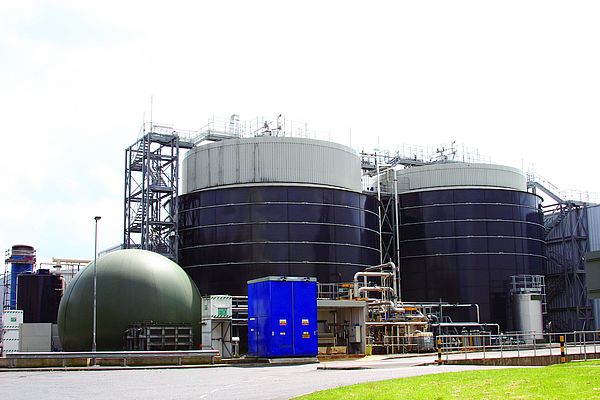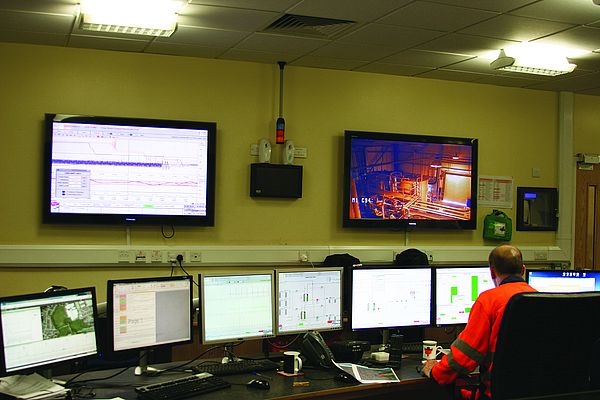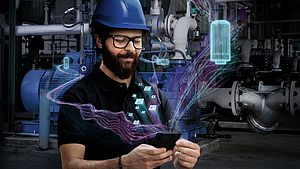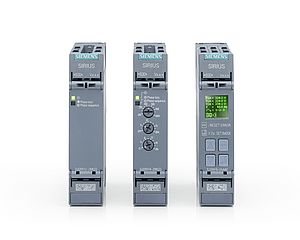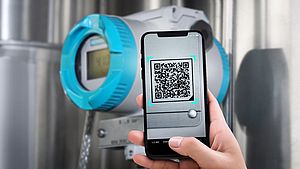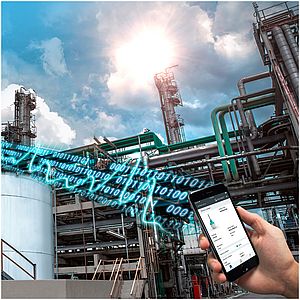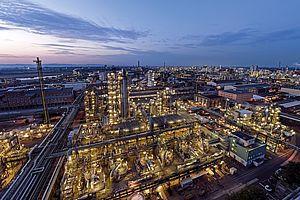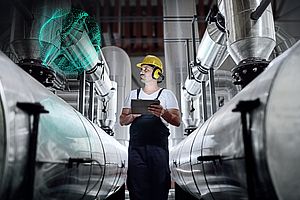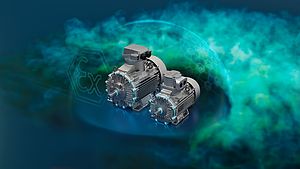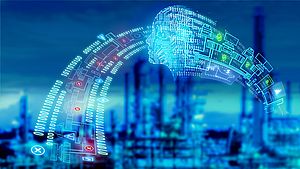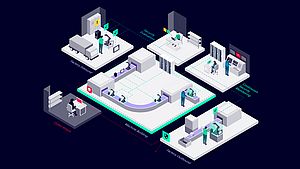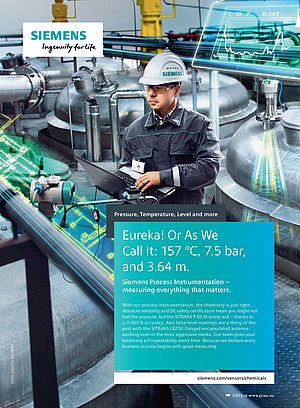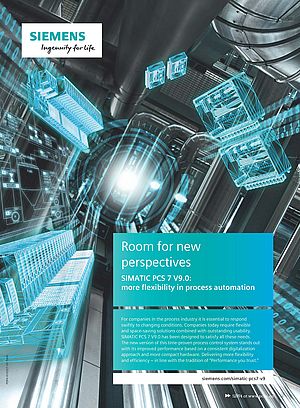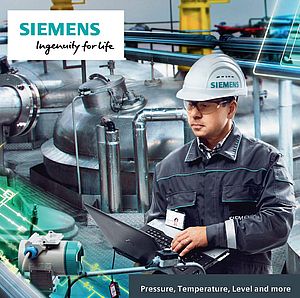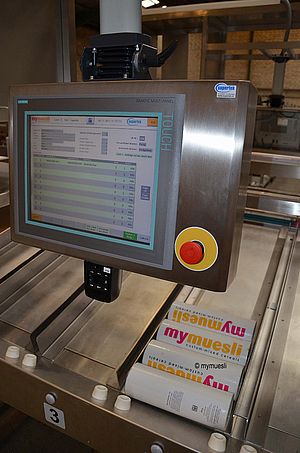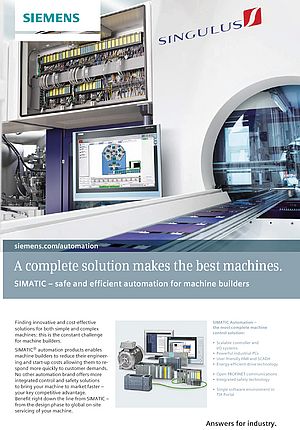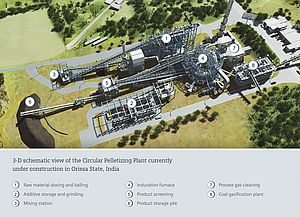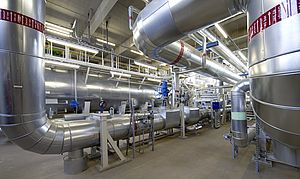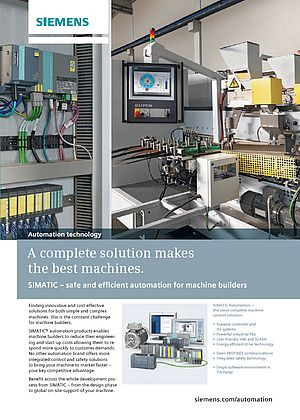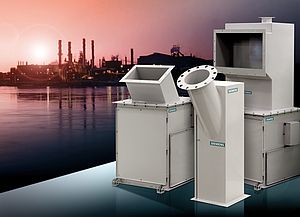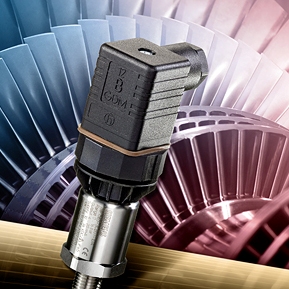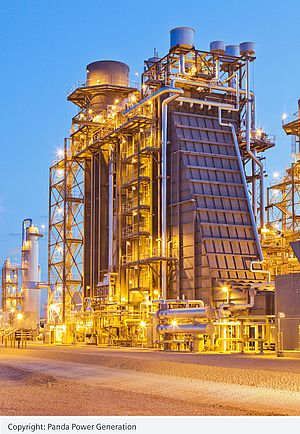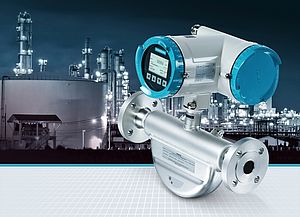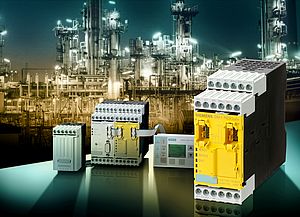Dumped by truckload into stockpiles, waste from surrounding communities must first be sorted. A grapple (a massive version of those claw arcade games) picks up around 100 kilograms of garbage in each grab, depositing everything on continuously moving belt conveyors.
Waste must be separated in several different stages to remove plastics and other non-organic materials. Powerful magnets pull recyclable metal from the moving waste; giant fans blow lighter plastics away from heavier materials; and manual sorting by Global Renewables employees removes anything else that won’t break down.
After the organic waste has traveled close to 1.4 km on conveyors through each sorting stage, it is mixed with warm rainwater in huge percolators. A 60-meter long shaft in the center of the percolators, controlled by a Sinamics drive from Siemens, rotates to mix waste and water. Water-soluble organics make an energy-rich solution and are ready to begin the composting process.
Adding an appropriate amount of water is essential to keeping the percolate balanced – neither too watery nor too solid. Siemens Sitrans FM electromagnetic flowmeters monitor the rainwater usage, while Sitrans LR250 radar transmitters track the level of wet solids inside the percolator. If levels get too low, capacitance switches alert operators and more solids and water are added.
Time to digest
After percolation, a chemical flocculent removes any sand contained in the percolated liquid. Addition of polyelectrolytes causes sand to clump together so it can be easily removed.
Sitrans Probe LU ultrasonic transmitter measures inventory levels in the flocculent storage vessel.
Throughout the entire liquid refining process, a number of instruments are hard at work:
• Sitrans P pressure sensors measure levels and liquid pressures;
• Sitrans T temperature sensors track water (heating circuit) and digester temperatures;
• Sitrans LR250 level transmitters continuously monitor levels in the water, percolate, and digestate tanks;
• Sitrans F M MAG 3100 flowmeters measure the flow of water, percolate, digestate, and sump flows;
• Sipart PS2 valve positioners provide precise control of valves throughout this process.
Together, these instruments give operators throughout the facility an exact picture of conditions and operations in this stage of the power generation process.
Finally, where the magic happens: The slurry mix of water and organic waste enters two massive anaerobic digesters. The combination of heat and hot water added to the digester keeps contents at 38° C, and countless microorganisms generate biogas. Gas is captured in a spherical gasholder and then used to power four generators, creating those two megawatts of electricity.
Sitrans LR250 can also be found here, on the wastewater storage vessel that feeds the digester. And Sitrans LR200 radar transmitters monitor the levels in the two million-liter (528,000 gallon) digesters themselves.
Returning to the earth
Any solid organic materials left over from the digestion process – or those that were removed from the percolator – make their way to compost piles, becoming dark, rich soil after about seven weeks. This compost, or organic growth medium, is used for municipal roadside planting projects across the region.
Throughout this entire process, instrumentation is the eyes and ears of the facility, connected through Profibus DP and PA to the control room – the brains of the operation.
Global Renewables operators use a Siemens Simatic S7-400 control system to monitor every instrument, ensuring that processes run smoothly. With Simatic PDM (process device manager), operators can perform more in-depth diagnostics of each instrument without ever leaving the control room.
As Simon Russell, responsible for controls and automation at Global Renewables, says, “We use Siemens instrumentation, drives, and automation throughout the plant. This was chosen because it gives precise control of the process, which is exactly what we need.”
And by processing more than 300,000 tons of waste each year and generating green power from it, innovative companies like Global Renewables are exactly what this world needs.
Author: Derek Moore, Product Manager UK and Ireland at Siemens


